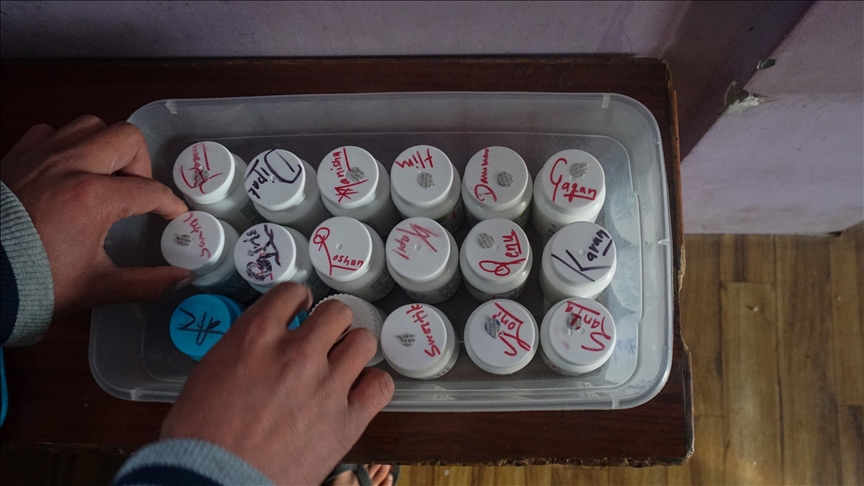As any gardener knows, nature doesn’t need much space to thrive – give her an inch, and she’ll take a mile! Neglect your weeding in the allotment for just a few days, and you’ll be left with overgrown beds that seem as if you’ve been gone for a year. It’s frustrating, yes, but it’s also a perfect reflection of how dynamic and resilient our environment can be when given half a chance. Nature, in its pursuit of growth, can take even the smallest opportunity and transform it into something magnificent. Across the world, there are numerous instances where nature has completely reclaimed areas once dominated by human infrastructure, often with stunning results. These cases show how, when nature is given the space and freedom to evolve, it can thrive in places we might expect it least. Here are five awe-inspiring examples of how plants, animals, and entire ecosystems are taking back the land we once occupied, proving that nature is always waiting to reclaim its territory.
One of the most striking examples of nature’s remarkable ability to recover is Houtouwan, a small, abandoned fishing village on the island of Shengshan, part of China’s Shengsi Islands in the East China Sea. The village was once home to a thriving community of fishermen, but as transportation to the island became increasingly difficult and its remote location made life unsustainable, Houtouwan was abandoned in the 1990s. Located about 65 kilometers from the mainland, the village can only be reached by private boat or ferry. This isolation played a major role in the abandonment, as it became clear that it was no longer feasible for residents to maintain the village’s infrastructure. Yet, over the span of just 30 years, nature has taken full advantage of this seclusion. The once-barren and decaying walls and streets of Houtouwan have been transformed into a lush, verdant landscape. Towering vines, ferns, and tropical plants have completely overtaken the abandoned buildings. What was once a place of human habitation is now a sprawling green jungle. Nature has erased all traces of human presence, and the village is now virtually unrecognizable, with homes and streets swallowed up by vegetation. The phenomenon of nature reclaiming such an isolated human settlement is a stunning reminder of how quickly ecosystems can take over, filling spaces that we leave behind with vibrant life. The transformation of Houtouwan is not only a visual spectacle but also a demonstration of nature’s resilience and its ability to regenerate and evolve when given the chance.
In a similar vein, the Spreepark in Berlin, Germany, offers another remarkable example of how human-made spaces can be overtaken by nature. Originally opened in 1969, Spreepark was a popular amusement park in Berlin. But by 2001, due to financial troubles, the park closed its gates for good, leaving behind a vast array of aging roller coasters, ferris wheels, and other amusement park structures. At first, it seemed like the park might remain a relic of a bygone era, slowly decaying over time. However, nature quickly stepped in to reclaim what was left behind. Within just a few years, the park was engulfed by wild plants and trees. The once-famous rollercoaster tracks became choked with ivy and other climbing plants, while fallen plastic dinosaurs that once entertained children were now half-buried in the thick greenery. The contrast between the decaying man-made structures and the thriving plant life is both eerie and beautiful.
The wild overgrowth has transformed the abandoned park into an unexpected ecological paradise. Despite ongoing wrangling over the site’s ownership and future, nature has continued to thrive. However, there is now a proposal to reopen Spreepark, but with a twist: this time, the park’s natural environment would be integrated into the design, rather than wiped away. The new plan aims to preserve and even enhance the ecological growth that has taken root there. The transformation of Spreepark into a flourishing wild space is not just a fascinating visual display but a lesson in how human development can coexist with nature, offering a potential model for future urban spaces where nature is not seen as something to be eliminated, but something to be integrated into our cities.
Both Houtouwan and Spreepark show us the incredible speed at which nature can reclaim human spaces once we step back and give it the opportunity. These sites serve as poignant reminders that our creations, no matter how grand or seemingly permanent, are ultimately fragile in the face of nature’s relentless growth and adaptability. The transformation of these areas from human-dominated environments to wild, green spaces underscores the importance of allowing nature to regenerate and take its rightful place, free from the constraints of human interference.
Another fascinating example of nature’s reclamation is the SS Ayrfield, a rusting hulk of a ship located in Homebush Bay, Sydney. Built in Greenock, Scotland, the SS Ayrfield was launched in 1911 and served as a cargo steamer before being repurposed as a supply ship during World War II. By the 1970s, the ship was decommissioned and left to rust in the bay. Over the years, nature has transformed this abandoned vessel into a unique and unexpected forest.Mangrove trees, which thrive in the wetlands surrounding the bay, have taken root in the ship’s hull, turning it into a floating green oasis. This striking scene highlights how even the most industrial and man-made structures can become home to thriving ecosystems when left undisturbed.
The SS Ayrfield, now a floating forest, serves as a testament to the power of nature to find a way to grow, even in the most unlikely of places.These examples remind us that nature is ever-present, waiting for the chance to reclaim the spaces we abandon. Whether it’s a remote fishing village in China, an old amusement park in Germany, or a decaying ship in Sydney, nature has an uncanny ability to adapt and flourish in these spaces, demonstrating that life always finds a way to thrive when given the opportunity.
Madina Mammadova\\EDnews









